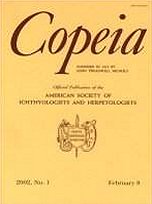The visual biology of Hawaiian reef fishes was explored by examining their eyes for spectral sensitivity of their visual pigments and for transmission of light through the ocular media to the retina. The spectral absorption curves for the visual pigments of 38 species of Hawaiian fish were recorded using microspectrophotometry. The peak absorption wavelength (λmax) of the rods varied from 477–502 nm and the λmax of individual species conformed closely to values for the same species previously reported using a whole retina extraction procedure. The visual pigments of single cone photoreceptors were categorized, dependent on their λmax-values, as ultraviolet (347–376 nm), violet (398–431 nm) or blue (439–498 nm) sensitive cones. Eight species possessed ultraviolet-sensitive cones and 14 species violet-sensitive cones. Thus, 47% of the species examined displayed photosensitivity to the short-wavelength region of the spectrum. Both identical and nonidentical paired and double cones were found with blue sensitivity or green absorption peaks (> 500 nm).
Spectrophotometry of the lens, cornea, and humors for 195 species from 49 families found that the spectral composition of the light transmitted to the retina was most often limited by the lens (73% of species examined). Except for two unusual species with humor-limited eyes, Acanthocybium solandri (Scombridae) and the priacanthid fish, Heteropriacanthus cruentatus, the remainder had corneal-limited eyes. The wavelength at which 50% of the light was blocked (T50) was classified according to a system modified from Douglas and McGuigan (1989) as Type I, T50 <= 355 nm, (32 species); Type IIa, 355 < T50 <= 380 nm (30 species); Type IIb, 380 < T50 <= 405 nm (53 species) and Type III, T50 > 405 nm (84 species). Possession of UV-transmitting ocular media follows both taxonomic and functional lines and, if the ecology of the species is considered, is correlated with the short-wavelength visual pigments found in the species.
Three types of short-wavelength vision in fishes are hypothesized: UV-sensitive, UV-specialized, and violet-specialized. UV-sensitive eyes lack UV blockers (Type I and IIa) and can sense UV light with the secondary absorption peak or beta peak of their longer wavelength visual pigments but do not possess specialized UV receptor cells and, therefore, probably lack UV hue discrimination. UV-specialized eyes allow transmission of UV light to the retina (Type I and IIa) and also possess UV-sensitive cone receptors with peak absorption between 300 and 400 nm. Given the appropriate perceptual mechanisms, these species could possess true UV-color vision and hue discrimination. Violet-specialized eyes extend into Type IIb eyes and possess violet-sensitive cone cells.
UV-sensitive eyes are found throughout the fishes from at least two species of sharks to modern bony fishes. Eyes with specialized short-wavelength sensitivity are common in tropical reef fishes and must be taken into consideration when performing research involving the visual perception systems of these fishes. Because most glass and plastics are UV-opaque, great care must be taken to ensure that aquarium dividers, specimen holding containers, etc., are UV-transparent or at least to report the types of materials in use.





